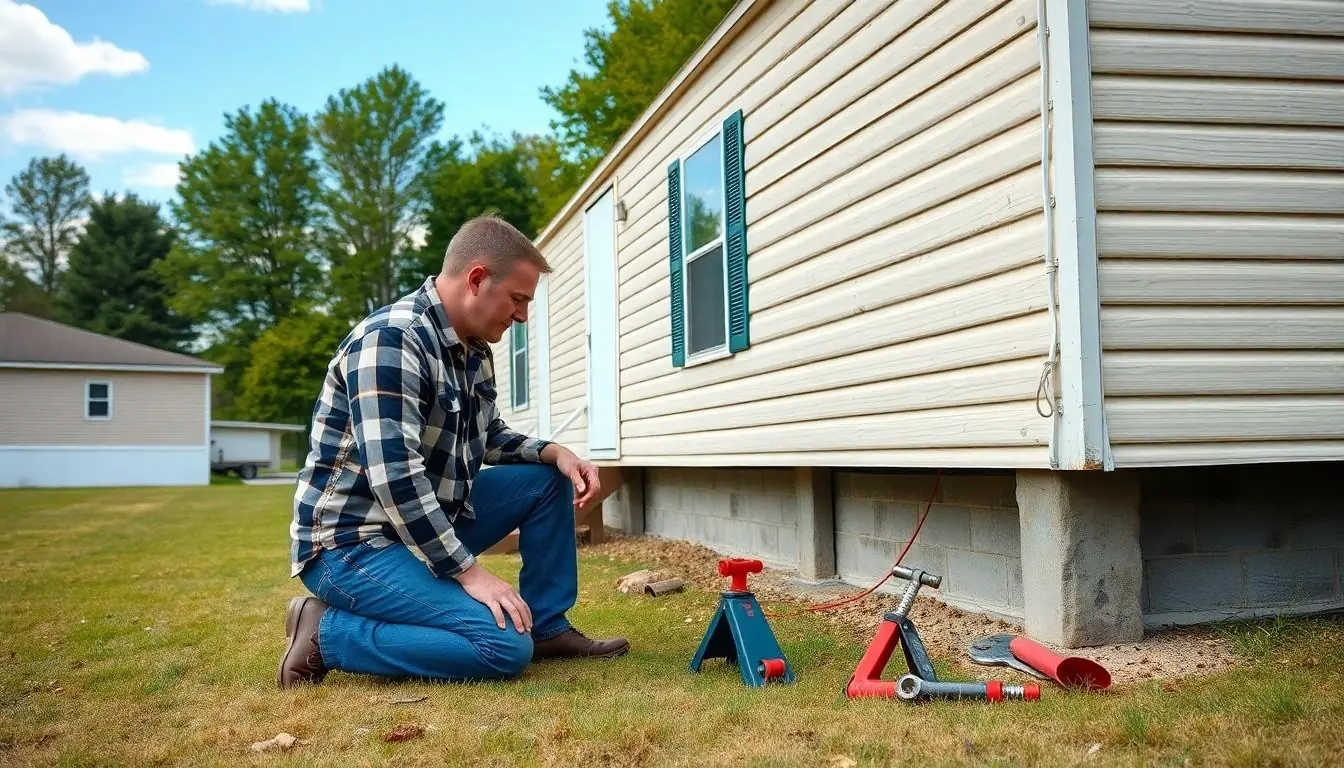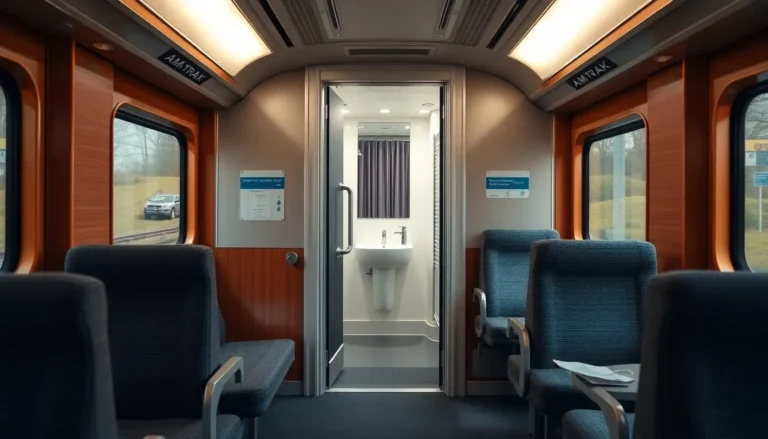Moving a mobile home might sound like a task only a superhero could tackle, but with the right know-how, anyone can do it. Imagine the thrill of taking your cozy abode on the road, like a turtle shedding its shell for a new adventure. It’s not just about relocating; it’s about embracing a lifestyle that’s as flexible as your favorite pair of sweatpants.
Table of Contents
ToggleUnderstanding Mobile Home Moving
Moving a mobile home involves several key considerations. Understanding these aspects ensures a smoother relocation process.
Types of Mobile Homes
Manufactured homes and mobile homes represent the primary types. Most manufactured homes meet strict federal building codes, providing enhanced durability. Older mobile homes, often built before 1976, might consist of less sturdy materials. Additionally, single-section and multi-section homes exist, differing in size and structure. Each type requires specific moving techniques and equipment. Familiarity with these distinctions helps in planning the move effectively.
Legal Considerations
Navigating legal requirements is crucial when moving a mobile home. Permits are typically necessary for transport, varying by state or local jurisdiction. Property ownership verification ensures compliance with zoning laws related to mobile home placement. Regulations may apply to transporting oversized loads on public roads, demanding adherence to safety standards. Reviewing local guidelines ahead of time helps avoid potential legal pitfalls during the moving process.
Preparing for the Move

Preparing for a mobile home relocation involves careful planning and resource management. This phase sets the foundation for a smooth and efficient process.
Assessing the Mobile Home
Start by evaluating the overall condition of the mobile home. Inspect the structure for any damage that might complicate the move. Check for loose or damaged parts, as repairs may be necessary prior to relocation. Measure the dimensions of the home and note its weight, which helps in identifying suitable transportation options. Verify access points on the property, such as driveways or tree cover, to ensure safe movement. Understanding these factors allows for informed decisions that facilitate the moving process.
Gathering Necessary Equipment
Obtain the right tools and equipment for the move. Equip the process with a specialized trailer that can support the mobile home’s weight and size. Use jacks to lift the home safely for loading. Gather straps and chains to secure the mobile home during transportation. Prepare equipment necessary for disconnection, such as wrenches and pliers, to handle plumbing and electrical systems. Ensure that all tools are in good working condition to promote efficiency and safety during the move. Having everything ready beforehand streamlines the entire relocation process.
Steps to Move a Mobile Home Yourself
Moving a mobile home requires careful planning and execution. Each step plays a crucial role in ensuring a successful relocation.
Preparing the Site
Start by selecting the new location for the mobile home. The site should be accessible, level, and compliant with local zoning laws. Inspect the area for obstacles like trees or power lines that may obstruct the move. Clearing a pathway ensures smooth transportation of the home. Consider preparing the ground with gravel or concrete pads for steadiness. Finally, verify that all permits are in place before proceeding.
Disconnecting Utilities
Disconnect all utilities before moving. Begin with the electricity, followed by water and sewage connections. Hiring professional help may simplify this process, ensuring safety during disconnections. After that, document each utility line’s condition and any necessary repairs needed prior to reconnections. This prevents future issues at the new site. Remember to notify utility providers about the move, allowing time for service cancellation and transfer.
Securing the Mobile Home
Secure the mobile home before transporting it. Make sure to remove any loose items from inside to minimize damage during the move. Next, use straps to secure doors and windows, preventing them from opening unexpectedly. Additionally, properly secure the mobile home to the trailer using heavy-duty tie-downs and jacks. Inspect the support structure for stability. Prioritizing these steps ensures that the mobile home remains intact and secure during relocation.
Transporting the Mobile Home
Transporting a mobile home requires careful planning and the right equipment. Adhering to legal regulations and safety measures ensures a successful move.
Choosing the Right Vehicle
Selecting an appropriate vehicle is crucial for safely transporting the mobile home. A heavy-duty truck with a towing capacity of at least 10,000 pounds typically fits the requirements for most mobile homes. Flatbed trailers or specialized mobile home trailers also provide stability and support during transport. Experienced movers often recommend using a vehicle equipped with a brake controller for better handling. Additionally, consider hiring professionals for assistance if unsure about towing capabilities.
Route Planning
Effective route planning plays a vital role in the mobile home transportation process. Identifying low-clearance areas, bridges, or tight turns ensures a safe transit. Using mapping applications helps pinpoint the best route based on current road conditions. In some cases, checking with local authorities about any restrictions can prevent delays. Prioritize timing the move to avoid peak traffic hours for smoother navigation. Consider wide loads signage as needed to inform other drivers of the transport.
Setting Up the Mobile Home at the New Location
Setting up a mobile home at the new location involves precise tasks like positioning, leveling, and reconnecting utilities. These actions ensure a comfortable living environment as well as compliance with local regulations.
Positioning and Leveling
Position the mobile home strategically on the lot to maximize space and accessibility. The home must sit on a well-prepared and level area to prevent movement or structural issues. Start by placing blocks or piers under the corners, ensuring they align with the home’s frame. Next, use a level to check the surface. Adjust the height of the blocks as necessary, allowing for proper drainage away from the home. Completing this process guarantees stability and minimizes future repairs.
Reconnecting Utilities
Reconnecting utilities involves several key steps to restore essential services. Begin by contacting utility providers to schedule reconnections of water, electricity, and gas. Ensure compliance with local codes when setting up the connections. Identify the main shut-off valves and make sure they are easily accessible. Check all lines for damage or leaks before restoring service. After utilities are reconnected, testing each system becomes crucial for safety and functionality. This careful attention to details ensures a smooth transition into a new living space.
Successfully moving a mobile home is an achievable task with the right preparation and knowledge. By following the outlined steps and paying attention to details, anyone can navigate the complexities of this process.
It’s crucial to remain organized and proactive throughout each phase of the move. From securing permits to ensuring safe transport and setup, taking these measures will lead to a smoother relocation experience.
Ultimately, embracing the adventure of moving a mobile home can open up new opportunities for a flexible lifestyle, making the effort worthwhile.


